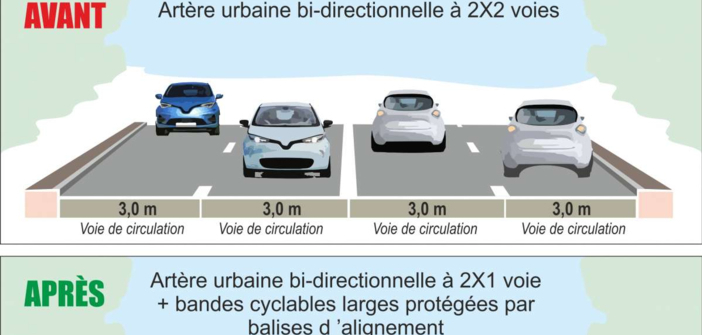During this period of lockdown, cities are finding an unexpected balance: reduction of pollution, elimination of noise pollution, and an awareness of nature.
Laurent LANQUAR-CASTIEL, co-secretary of the ecologists 06, states, “Let us take advantage of this lockdown, as an opportunity, to test and implement solutions that urban fury previously prevented, in order to prepare for a post-carbon world. The occasion is perfect for experimenting with tactical urbanism in our areas free from any automobile pressure.”
He continues, “The collapse of oil prices should not be an opportunity to consume more at the end of the crisis but to create a more pleasant and more human city by reducing the place of the car. Let us experiment with simple, inexpensive, yet ambitious mechanisms for a post-carbon city by installing temporary bike lanes, for example, on the Promenades du Soleil and de la Mer in Menton or on the Croisette in Cannes. Cycling is an excellent tool to gradually emerge from the lockdown.”
What is tactical urbanism? It involves the reclamation of urbanism by the inhabitants, of which the #parklet is a symbol. #Parklets, activist installations, are often implemented during bike-centered events and parking days: occupying a parking spot to return it to residents by setting up a living room, a garden, a petanque court, a bicycle park, or a solarium with (fake) grass…
Originating from resident consultations, the concept of tactical urbanism was born in California in 2005, based on the reclamation of public space. Its other name, “urban acupuncture,” highlights the urban opportunity to create sporadic urban utopias through inventive, frugal, immediate, low-cost, and human-scale installations.
Tactical urbanism was brought back into focus by CEREMA, which published pragmatic solutions for temporary bike facilities during the lockdown period.
“The goal is to accelerate urban transformation during this lockdown period,” adds Laurent LANQUAR-CASTIEL. “Tactical or participatory urbanism complements institutional urbanism, both in terms of planning and study. Thus, ASPONA has developed Climate Plans at the neighborhood level, which are more productive than the costly, contested, and ineffective PCAET of the Nice metropolis.”


